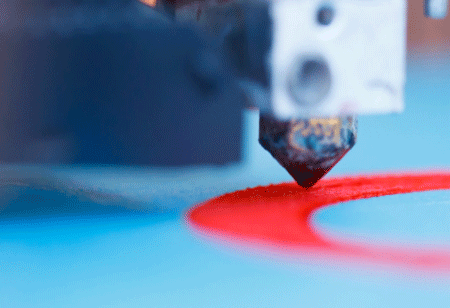THANK YOU FOR SUBSCRIBING
Simulation Reinvents Additive Manufacturing Processes!
The incorporation of simulation in additive manufacturing can help organizations in predicting the outcomes of parts, facilitating better results.

By
Apac CIOOutlook | Friday, July 05, 2019
Stay ahead of the industry with exclusive feature stories on the top companies, expert insights and the latest news delivered straight to your inbox. Subscribe today.
The incorporation of simulation in additive manufacturing can help organizations in predicting the outcomes of parts, facilitating better results.
FREMONT, CA: The fourth industrial revolution has brought forth revolutionary technologies, and additive manufacturing is one of them. It has enabled organizations to manage large scales of data, utilizing it in groundbreaking technologies such as laser power bed fusion (LPBF) and electron beam melting (EBM).
In the additive manufacturing process, the components have a build envelope of 30m. The material melt pool is about 100 microns, and the laser travels several kilometers to develop a complete part. However, it requires a cooling rate of 1 million degrees per second and a seamless flow of operations.
LPBF has enabled the development of sophisticated parts with convoluted geometrics. It can manipulate material properties to build them in an intricate, step-by-step manner. The elements created through LPBF can have varying hardness and stiffness throughout its microstructure, allowing the inclusion of pores in some areas of the part. The capability of tailoring properties at different locations can optimize the performance of the components.
Check This Out: Managing MFG
The incorporation of a simulation process can enable the manufacturers to predict the results. It can find applications in aerospace and automotive industries to produce safe and precise end-user products. However, the viability of the simulation depends on the improvements in the results. Hence, the simulation needs to be prompt and accurate when predicting the performance of the components.
Research reveals that the accurate prediction capability of the simulation depends on specific factors. Even if a small defect is ignored during the simulation process, it can completely alter the predictions. Hence, simulation has to be conducted on a multi-scale level to deliver accurate results. In processes such as LPBF and EBM, which depend on data, it is challenging to maintain a balance between accuracy and computation time.
To drive accuracy in simulation, it is necessary to connect the different factors in component design, including at part-level, multilayer, and melt pool into an integrated framework. Only by balancing all the factors can simulation technology be viable enough for applications in LPBF and EBM processes.
The current technology cannot accommodate accurate simulation in a short period. Hence, it is necessary to focus on the speed aspect of simulation to make it viable for regulated industries. Also, additive manufacturing technologies can be potentially used for testing functional prototypes to measure the performance level. The development of simulation in the additive manufacturing sector can drive its adoption in mass production industries.
Check out:





